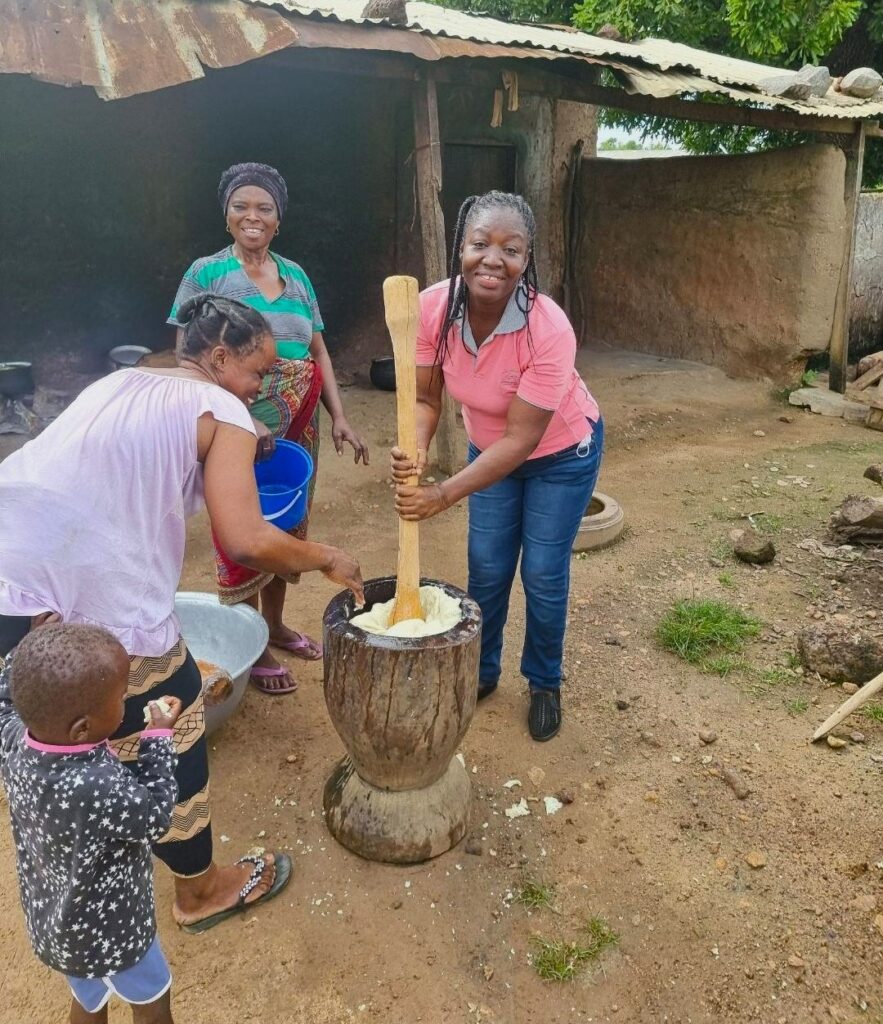By Indika Arulingam, Charity Osei-Amponsah and Andrew Okem
Ghana’s rural areas are experiencing a multi-dimensional transformation in livelihood pathways and social and gender relations. For women from many communities in the Upper-West region, these transformations have resulted in changing dynamics within the household, with complicated consequences. From being considered largely as secondary producers in agriculture, women are now more likely to be regarded as farmers in their own right. However, with other gendered roles appearing to be far more resistant to change, this has resulted in an increase in the daily labor of many women.

Women’s labor at home and in the field
New forms of geographic mobilities means gendered divisions of labor and responsibilities in agriculture are slowly shifting in the Upper West region. With agriculture being the primary means of livelihood in the region, it has been a usual practice during the long dry season for many of the men to travel to the forest agroecological zones of Ghana to look for other income earning opportunities, before returning to their villages for the rainy season. However, with the expansion of illegal small-scale mining in some communities of Northern Ghana, these patterns of mobility are changing. Many young men in particular are leaving their farming roles and spending longer periods of time working at mining sites. Against this labor shortage, who is socially considered a farmer, typically a masculine identity, is shifting, as more women are taking up roles in agricultural production that used to be undertaken by men.
These shifting gender roles has also been enabled by development interventions led by state and non-state actors that have specifically targeted women for agricultural support. Research conducted in seven districts under the Resilience Against Climate Change-Social Transformation Research and Policy Advocacy (REACH-STR) project found that for many of the women, participation in a Village Savings and Loans Association (VSLAs) has been an important mechanism for accessing agro-inputs and machinery, such as hiring tractor services. However, access to farm inputs remains a challenge for women who either do not hold membership with the VSLAs, or do not come from wealthy households. With expanding mechanization, agricultural production has also become increasingly individualistic. Now, women find it harder to draw on exchange labor and collective farming practices they might have traditionally relied on.
While women continue to take on more labor involved in agricultural production, their relationship to reproductive roles has remained far more rigid. Men’s participation in household labor is often irregular. It is often through their access to mechanization, for example, by using bicycles and motorbikes to transport firewood and water. The overwhelming share of cooking, cleaning, fetching water and firewood and taking care of children and sick relatives falls mostly on the older and younger women in the households. As a female farmer stated,
Some things change, some stay the same: Women and decision-making
Against the labor shortage associated with the increasingly long term mobilities of young men, care work, already overwhelmingly associated with women, has expanded into new domains. In the communities the REACH-STR project studied, livestock rearing, traditionally performed by men, has increasingly become a feminized role. However, when it comes to the sale of the livestock, it is the men who continue to be in-charge-of decision-making.
Decision making on key resources continues to be vested with the males. Land inheritance in Northern Ghana is largely patrilineal, and land distribution is controlled by either the head of the family, or the traditional head of the lineage or clan, typically males. While women are entitled to use rights through their husband or family, and often manage their own land plots, they cannot inherit land themselves. As a female farmer complained,
Control of key productive resources will increasingly determine how women, who now undertake an increasing share of agricultural production, respond to a changing climate. With the prolonged use of inorganic fertilizer, pesticides and weedicides, soil fertility has diminished over time, posing additional challenges for women, who are often given the less productive lands for cultivation. The indicators of climate change are already being felt in the communities studied, manifesting in prolonged droughts and erratic rainfall and heavy rains. Coping with these changes will have additional implications for the labor undertaken by women in agricultural work.
The REACH-STR project finds that in Ghana, rural planning processes in public policy tend to take a static view of gender and social relations and their influence on how people engage with livelihood spaces in rural areas. As climate resilience and geographic mobilities become increasingly important to incorporate into rural development planning, it is imperative to identify and consider that how different groups of people experience and respond to change is not fixed or linear but is constantly evolving.

